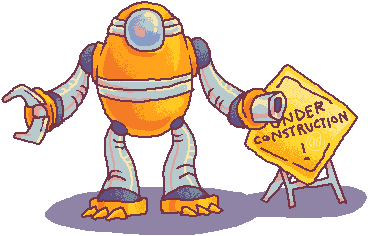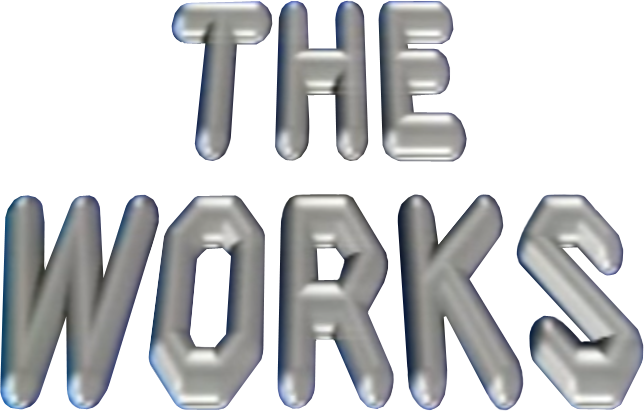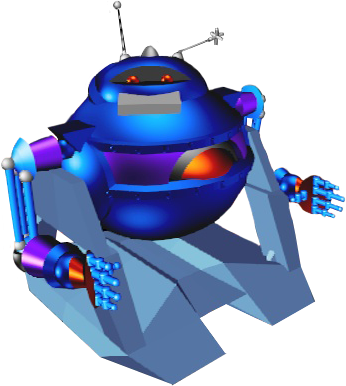Other Films from NYIT's Computer Graphics Lab
Given the experimental nature of the Computer Graphics Lab (it was a laboratory after all), it can be hard to draw distinctions between their projects, as they tended to overlap into one another. This page will aim to talk about other films made at the Lab, between small independent projects and large-scale efforts. Some of these may have overlap with The Works, and some not.
A lot of CGI work done in the early days of computer graphics used short-form video to its profitable potential: advertisements and television idents / bumpers are a popular subject, and you can see plenty of them in demo reels from just about any graphics company, not just the CGL. I'm not going to focus on them particularly here, mostly going for original projects.
This list is organized loosely by release year if applicable; if not, then the latest known year it was worked on.
"Tubby the Tuba" (1975)
Tubby the Tuba is a full-length film adaptation of the 1945 children's song on the same title by Paul Tripp and George Kleinsinger. The founder of the New York Institute of Technology, Alexander Schure, directed this project and gathered a cast of famous actors and animators to contribute to it. It was produced by the NYIT arts and animation departments.
The making of this movie is what inspired Schure to fund the exploration of computer graphics, and it was planned that computers would be used to aid in the animation process, but in the end Tubby was made using traditional animation techniques. Computer graphics would have to wait for a few years.
Tubby the Tuba is 81 minutes long, and was worked on from around 1973 to 1975. It may only be tangentially related to the lab, but I figured it deserves to be mentioned.
Links
• Tubby The Tuba full film, uploaded to YouTube by crushed241, 1 February 2023.
• Wikipedia page for Tubby the Tuba
• Animator Michael Sporn's blog post detailing his experience working on the film and the people involved, from 5 April 2007. Sporn talks about Tubby in a few of his posts: 3 November 2009, 15 June 2011, 9 April 2013.
"Sunstone" (1979)
Sunstone is an experimental short film created by artist Ed Emshwiller at the Lab, with the help of fellow lab-mates. Being surreal, there's not necessarily much in the way of a plot, but there are plenty of interesting visual effects. In the BBC Horizon episode "Painting by Numbers" (at around 21:50), Emshwiller said he took about 8 months to complete it, although he had apparently hoped to make a feature-length film.
Sunstone is 3 minutes long. Additional credits include Alvy Ray Smith, Lance Williams, and Garland Stern as computer animators; with thanks to the Guggenheim Foundation.
• Sunstone, uploaded to YouTube by VintageCG, 28 July 2009
• Pages for Sunstone shown at SIGGRAPH in1979 and 1986, from the SIGGRAPH archives.
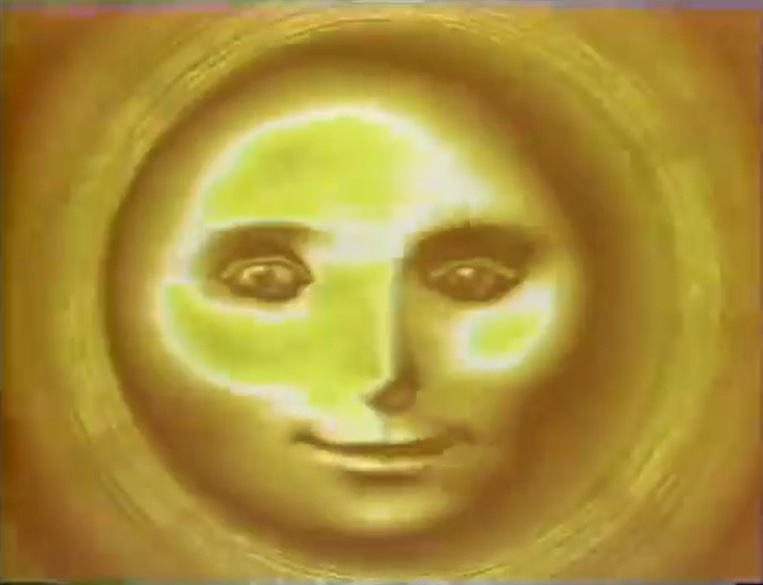
▲ A still from Sunstone.
"Swimmer (In the Abyss)" (1981)
Swimmer (sometimes subtitled In the Abyss) is a short animation of a human figure swimming downward. This is an early experiment in animating natural human motions with a realistic 3D model. Swimmer can be seen in the demo reel/"trailer" for The Works.
Swimmer is 6 seconds long. The human model was created by Ed Catmull, and animated by Rebecca Allen.
• Rebecca Allen's portfolio website listing of Swimmer
• Swimmer showcased on the K21 Collection website (a blockchain related project)
• An interview with Allen regarding Swimmer and its inclusion in the K21 Collection
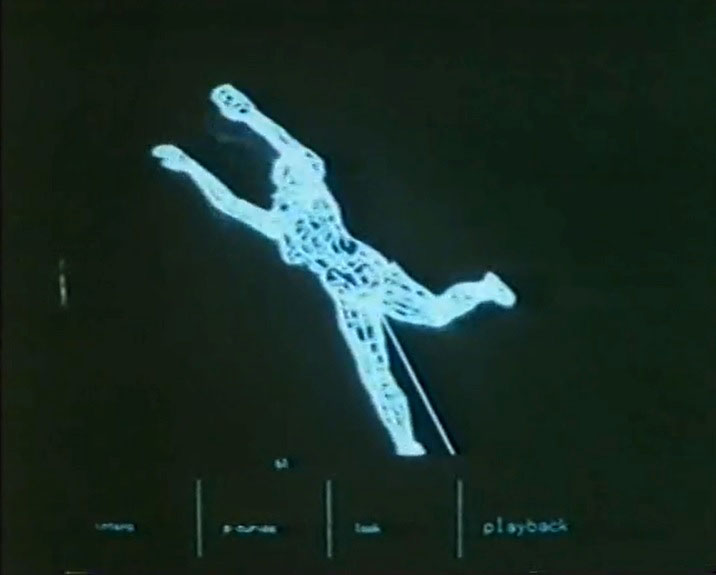
▲ A wire-frame view of Swimmer from an alternate angle, as seen in "Painting by Numbers", 14:58
"Puss in Boots" (unreleased?)
Puss in Boots is a film I frankly don't know much about! It appears 2D animated and probably used computer-generated effects and art.
It makes an appearance in the NYIT CGL's 1982 "Cannes" demo reel.
• NYIT's 1982 demo reel where Puss in Boots is visible at 13:05. Uploaded to YouTube by Mattrharris1, 22 June 2014
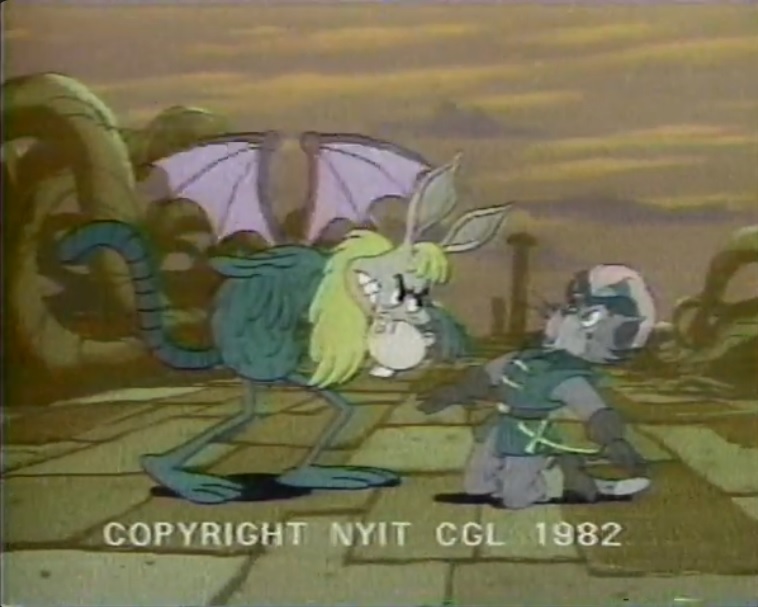
▲ Puss in Boots and a monster, as seen in the 1982 demo reel.
"The Catherine Wheel" (1982)
The Catherine Wheel is a dance performance choreographed by Twyla Tharp, with music by David Byrne, created in 1981. The following year, a TV movie was produced for it, which includes throughout it a computer-generated wire-frame human figure (I believe using the model by Ed Catmull) interacting with a human dancer. The credits specifically credit Rebecca Allen.
The Catherine Wheel is 74 minutes long. A scene including CGI is at the beginning and lasts about 20 seconds, and there are other small scenes throughout.
• The Catherine Wheel on YouTube, uploaded by Daniel Oscar Castiblanco Regalado, 13 September 2015
Will Powers' music videos: "Smile" and "Adventures in Success" (1983)
In 1983, artist and musician Lynn Goldsmith released a parody self-help album titled "Dancing for Mental Health" under the pseudonym Will Powers. Artist and computer graphics researcher Rebecca Allen was commissioned to create music videos for two of the album's singles: Smile and Adventures in Success.
"I ended up working with Lynn Goldsmith, who approached me to do a video for her album with Island Records. I agreed on the condition that I was granted complete artistic control, as I was working in a research lab and could not predict in advance how things would look. She agreed and I ended up creating two videos: Adventures in Success (1983) and Smile (1983)."
- Rebecca Allen in an interview with Valentino Catricalà. Published by Right Click Save, 28 April 2023.
• Smile official music video, uploaded to YouTube by Lynn Goldsmith, 24 July 2015
• Adventures in Success official music video, uploaded to YouTube by Lynn Goldsmith, 13 August 2015
• Wikipedia page for Will Powers
• Rebecca Allen's portfolio pages for Smile and Adventures in Success- each page lists credits
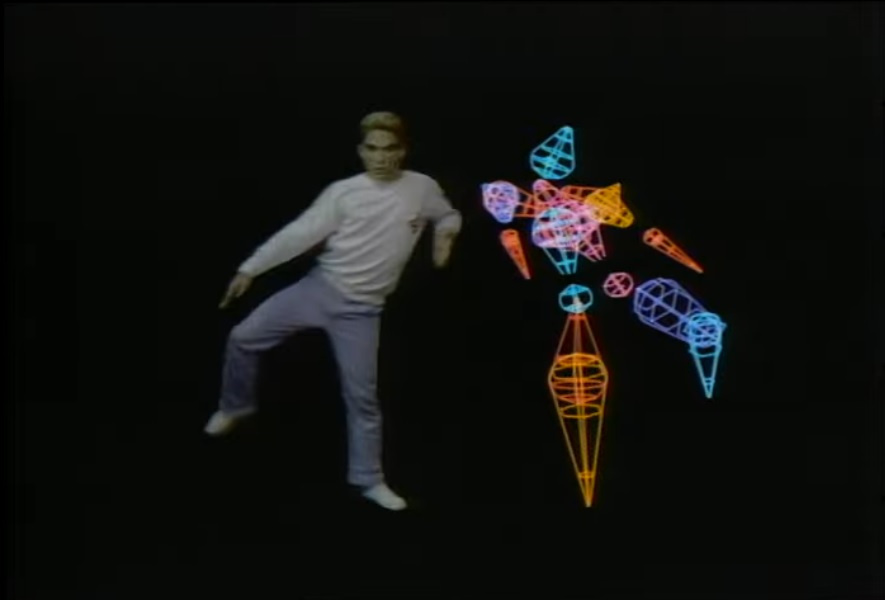
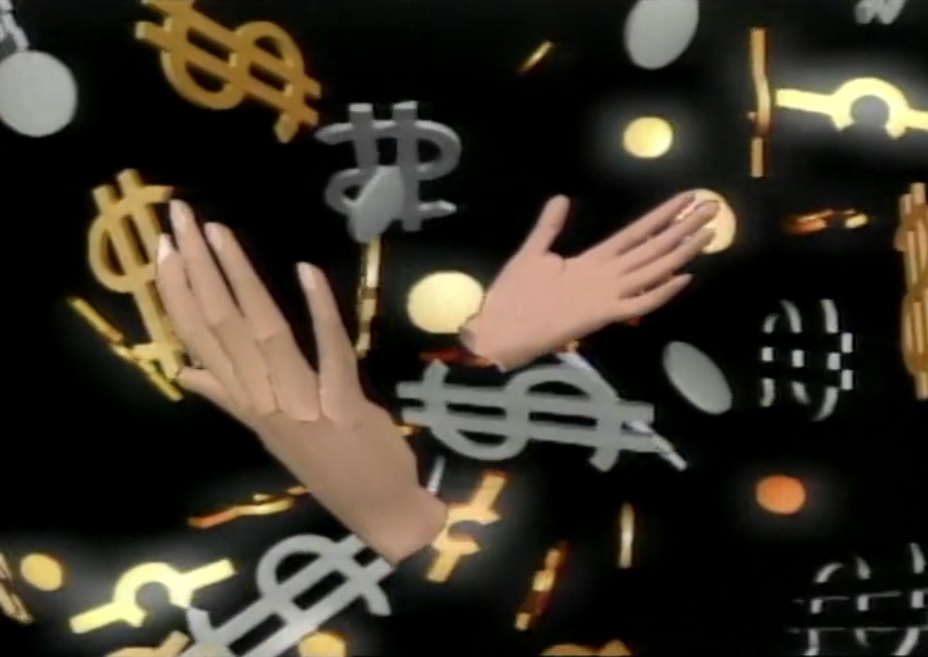
▲ Frames from Smile and Adventures in Success, respectively.
Fun fact: The colourful dancers from "Smile" appear in a piece of art by Bil Maher from 2013.
"3DV" (1983 or 1984)
3DV (standing for DynaDigiDataVac) was another main project of the Lab after The Works. 3DV serves as a pilot short for a potential show in which humanoid digital newscasters User Friendly and Dot Matrix would present television programming. This concept is echoed in the short "User Abuser" from 1984; and in the character of Max Headroom from 1984, a project unrelated to the NYIT CGL, but the work of the Lab was familiar to his creators.
3DV is 5 minutes and 40 seconds long, and was worked on at least from 1982 and finished around 1984. Credits include Rebecca Allen, Carter Burwell, Richard Lundin, Bil Maher (as character designer and voice of User Friendly), and Lance Williams.
• 3DV, uploaded to YouTube by mattrharris1, 7 July 2023.
• Bil Maher's portfolio page of Dot Matrix- the image from which does not load, but the title states her model is from 1982
• Rebecca Allen's portfolio page of 3DV, listing partial credits and stating its completion date as 1984
• SIGGRAPH's page for 3DV showing that it was shown at their 1986 show and completed around 1983- but which also states it is around 10 minutes long
